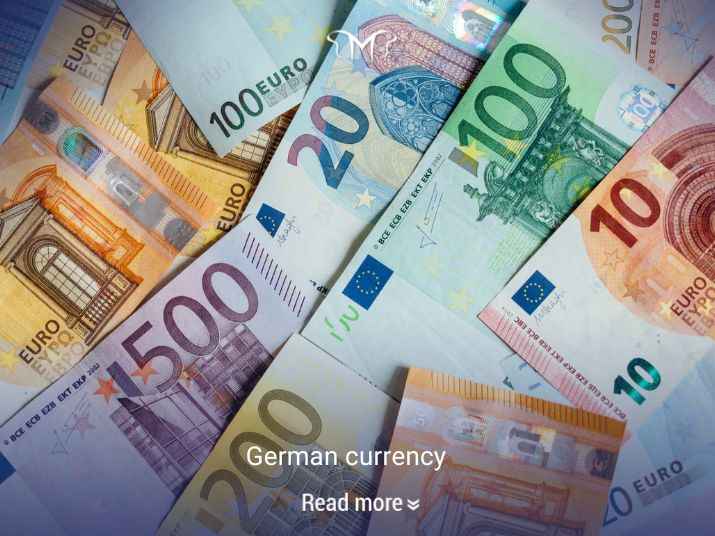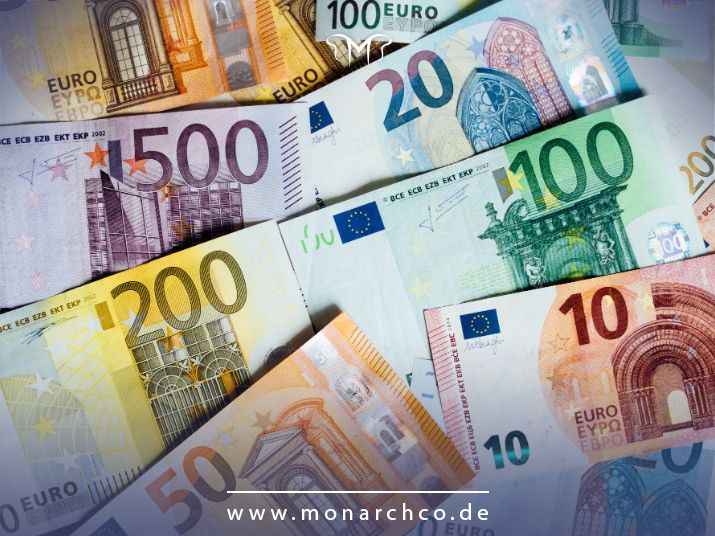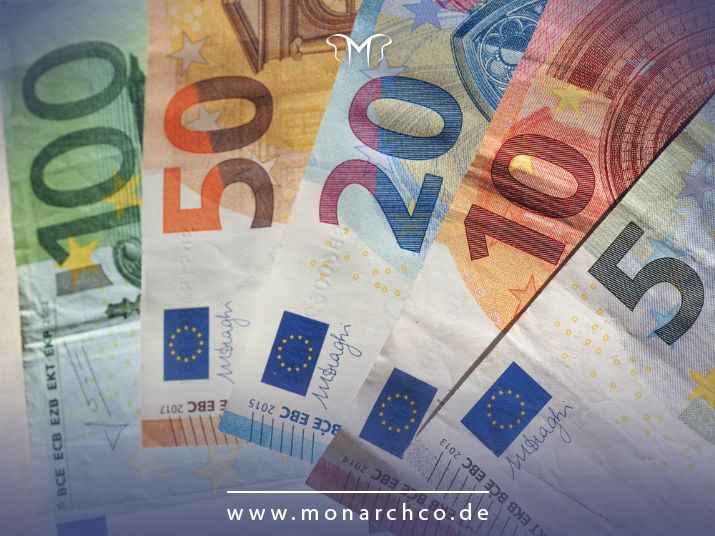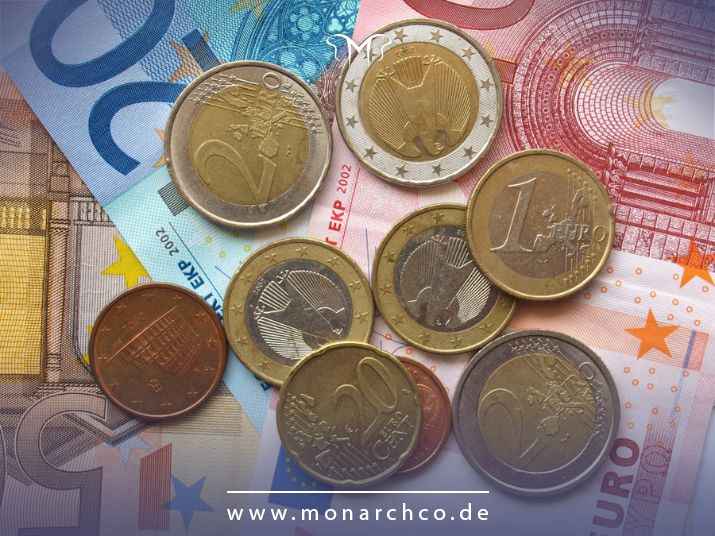
german currency
People intending to migrate or travel to Germany must undoubtedly obtain the country’s official currency to avoid difficulties in living or enjoying their time there. Many individuals, however, lack sufficient knowledge about the German currency, which can lead to challenges and issues during their migration or travel process. For this reason, we decided to provide a comprehensive discussion about the German currency in this article from the Monarch Immigration Holding website and share useful information with you. So, if you are planning to migrate or travel to Germany, we recommend staying with us until the end of this article.
Germany's Currency Before the Euro
In the past, Germany’s currency before the euro was the Mark. The Mark was considered one of the most valuable and popular currencies in Europe. However, in January 2002, the euro was introduced as a cash currency in Germany. Following its introduction, banks and stock markets in Germany and many other regions adopted the euro. By 2001, German citizens gradually shifted to using the euro, marking a change in the German currency. Interestingly, Germans were dissatisfied with the introduction of the euro as their national currency because they wanted the power of the Mark to remain intact. Furthermore, they were upset that no referendum was held, unlike in other countries, to decide on this change. The decision to introduce the euro as Germany's currency was made by the country's political leaders, leaving citizens without a voice in the matter.
Another interesting fact is that many Germans still haven’t fully adapted to the euro. They believe the change in currency significantly increased their cost of living. Currently, 19 countries across Europe use the euro, with Germany being one of them.

History of Germany’s Currency
Germany was among the first countries to use banknotes as a form of currency in 1871. Although banknotes existed, coins were more commonly used during this period. Over time, Germany’s official currency, the Mark, was standardized in the form of banknotes, ranging from 5 Marks to 1000 Marks. These rectangular banknotes were typically designed in green, blue, orange, brown, and red colors.
After World War I, due to severe inflation, the smallest denomination of banknotes was reduced to 1 Mark, and the use of paper money increased significantly. The Mark featured portraits of Germany’s leaders and notable figures, portraying the country’s history. Over time, the euro became the official currency of Germany.
Reasons for Germany’s Currency Change from Mark to Euro
The transition from the Mark to the euro was driven by several key factors, which are discussed below:
1. European Economic Integration
One primary goal of adopting the euro as Germany’s currency was to strengthen Europe’s economic and political identity and facilitate trade among member states of the union. This economic integration aimed to create a shared market and reduce transaction costs. Using the euro as Germany’s currency helped ease the country’s economic challenges and allowed it to interact seamlessly with its trade partners.
2. Economic Stability
Another reason for the currency change was to reduce inflation and currency volatility. After World War II, Germany faced various economic challenges, including inflation. Transitioning to the euro as a shared currency greatly contributed to stabilizing the economy and controlling inflation. Furthermore, the euro gained international recognition as a stable currency, boosting public trust in Germany’s currency.
3. Trade Advantages
The use of the euro in Germany reduced currency exchange costs and facilitated trade within the European Union. This was particularly crucial for Germany, one of the world’s largest exporters. Simplifying international trade was one of the most significant trade advantages of converting Germany’s currency from the Mark to the euro.
4. Strengthening Economic Power
Adopting the euro enabled Germany to remain competitive in the global market and maintain its economic strength. Over the decades, this transition has solidified Germany’s position as a leading economic power in Europe and the world.

Information About the Euro, Germany's Official Currency
If you plan to use the euro, Germany’s official currency, as an immigrant or traveler, or if you want to learn more about living costs in Germany, you’ll need accurate information about the German currency to make the most of it. Here are some key details:
- Banknotes: The euro is available in denominations of 500, 200, 100, 50, 20, 10, and 5 euros. However, 500-euro banknotes have not been issued since 2019 and are now rarely in circulation.
- Coins: Coins include 1 and 2 euros, as well as smaller denominations like half a euro, 0.2, 0.1, 0.05, and 0.01 euros, although the latter are less commonly used today.
- Design: All euro banknotes and coins have a uniform design across countries. Each banknote includes a unique identification code showing where it was printed.
Wise Euro Card in Germany
If you cannot exchange your currency to Germany’s euro upon arrival, consider using a Wise Euro Card. This card, designed for tourists and immigrants, allows users to top up funds in their home currency and pay for expenses in Germany using euros. A major advantage of the Wise card is its ability to hold over 50 currencies simultaneously. It also enables users to exchange money at real market rates, significantly reducing conversion costs.
The main concern of immigrants is currency conversion in Germany
One of the main concerns that we see in our field of work, namely the immigration of nurses to Germany, is the conversion of currency into German currency. There are several points in this regard that we intend to talk about more. One of the very important things in this regard is to try to obtain the real and average market exchange rate. To do this, you can use currency converters that will help you to know the real value of your money and ensure that you have received German currency at a fair price. It is recommended to use banks to convert currency and avoid exchanging money in places such as hotels and airports; because these places usually have unfair rates for currency conversion and greatly reduce the value of your money. Also, using wise cards is a much better option, which we talked about at the beginning of this article. Finally, we suggest that you obtain complete information about the ATM from which you intend to withdraw money and then specify its type, because some of these machines charge higher fees.

The value and position of the German currency in the world
The German euro is one of the currencies that has performed very well in recent years and has a good position among the various currencies of the world. The value and price of the German currency is approximately equal to the US dollar or usually slightly higher or lower than this currency. In general, the German currency can be considered a standard currency. When you obtain euros, you can use them not only in Germany but also in other European countries and you have no special restrictions in this regard. This shows the value and position of this currency among different European countries.
Benefits of using the euro for immigrants in Germany
Using the euro in Germany has several benefits for immigrants that greatly facilitate their lives and economic activities. Here are some of the benefits of the German currency, the Euro, for immigrants:
Ease of financial transactions: The Euro, as the currency of Germany, makes financial transactions easier for immigrants. In fact, immigrants can pay their daily expenses and easily shop in various markets in the country using the Euro without worrying about currency conversion.
Easy access to the European market: One of the most important advantages of the Euro is that immigrants can easily travel to all countries in the region and do not need to convert currency. In fact, this is a very welcome development for people who want to travel to all European countries.
Economic stability: As we said, the Euro is one of the most reliable global currencies and has great economic stability. This stability gives immigrants more confidence about the value of the money they have in their hands.
Easy conversion to other currencies: The presence of various types of ATMs and numerous exchange offices in Germany makes it easy to convert other currencies to the Euro.
Receiving salaries and benefits: For immigrants, including nurses working in Germany, salaries and benefits are paid in euros. In fact, the salaries of nurses in Germany and most jobs are in euros, and this allows immigrants to easily manage their living expenses with the country's currency.
Final Thoughts
Germany’s official currency is the euro, which replaced the Mark. The euro is one of Europe’s most valuable and widely used currencies, offering numerous advantages to immigrants. By using the euro, individuals can manage their finances easily, not only in Germany but also in other European countries where the currency is accepted. This article aimed to provide comprehensive insights into the German currency. If you’re a nurse or healthcare worker looking to migrate to Germany, Monarch offers specialized services to support your journey.
Frequently Asked Questions
What was Germany's currency before the Euro?
Germany's currency before the Euro was the Deutsche Mark. The Mark was considered one of the most valuable and popular currencies in Europe. However, in January 2002, the Euro was introduced as the official cash currency in Germany.
What were the reasons for Germany's transition from the Mark to the Euro?
The reasons for transitioning from the Deutsche Mark to the Euro include European economic integration, economic stability, trade benefits, strengthening economic power, and more.
What are the benefits of using the Euro for migrants in Germany?
Benefits include easier financial transactions, receiving and managing salaries and benefits in Euros, convenient currency conversion to other currencies in Germany, easier access to European markets, economic stability, and more.


